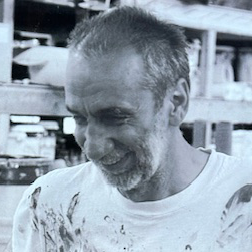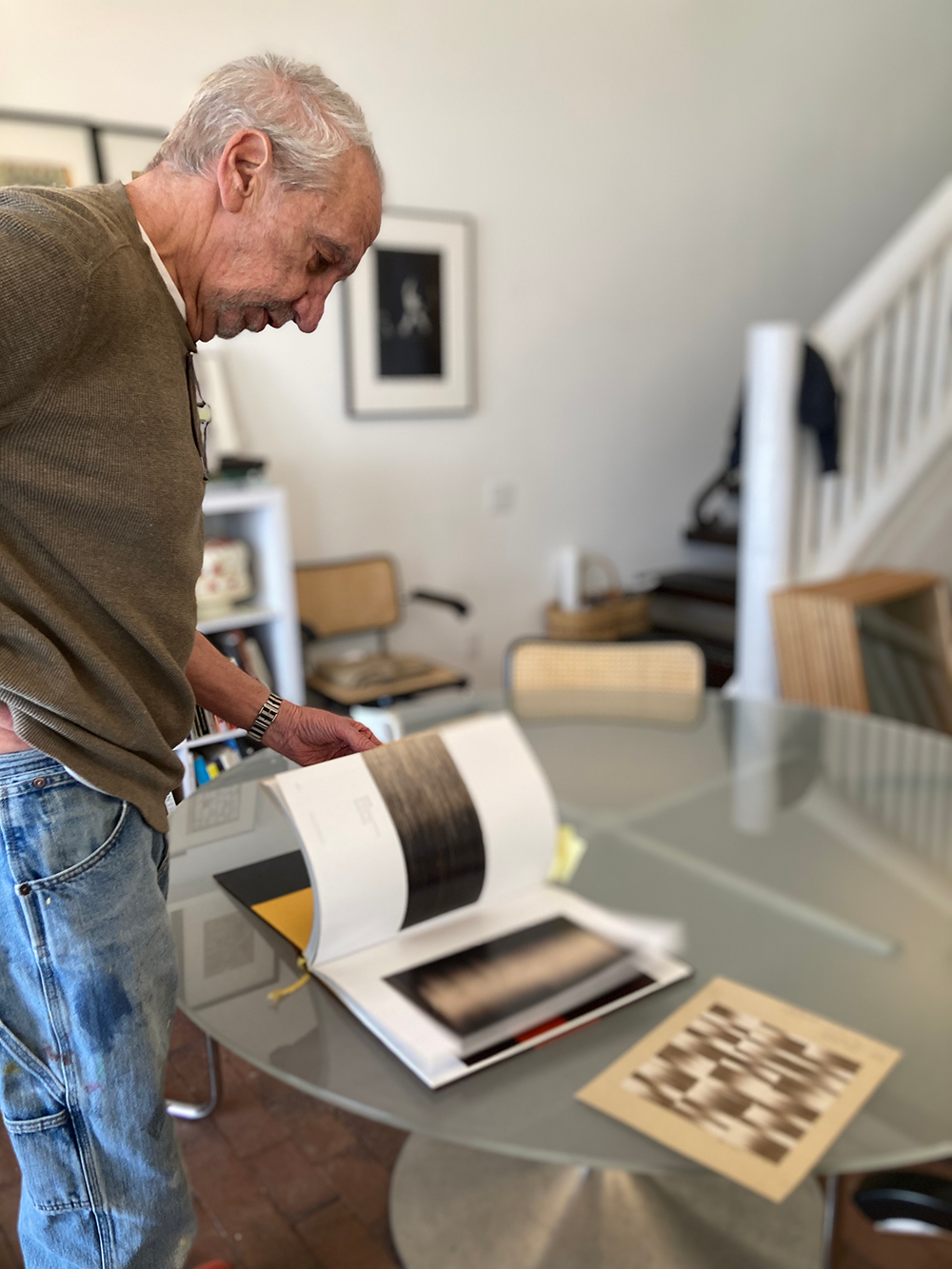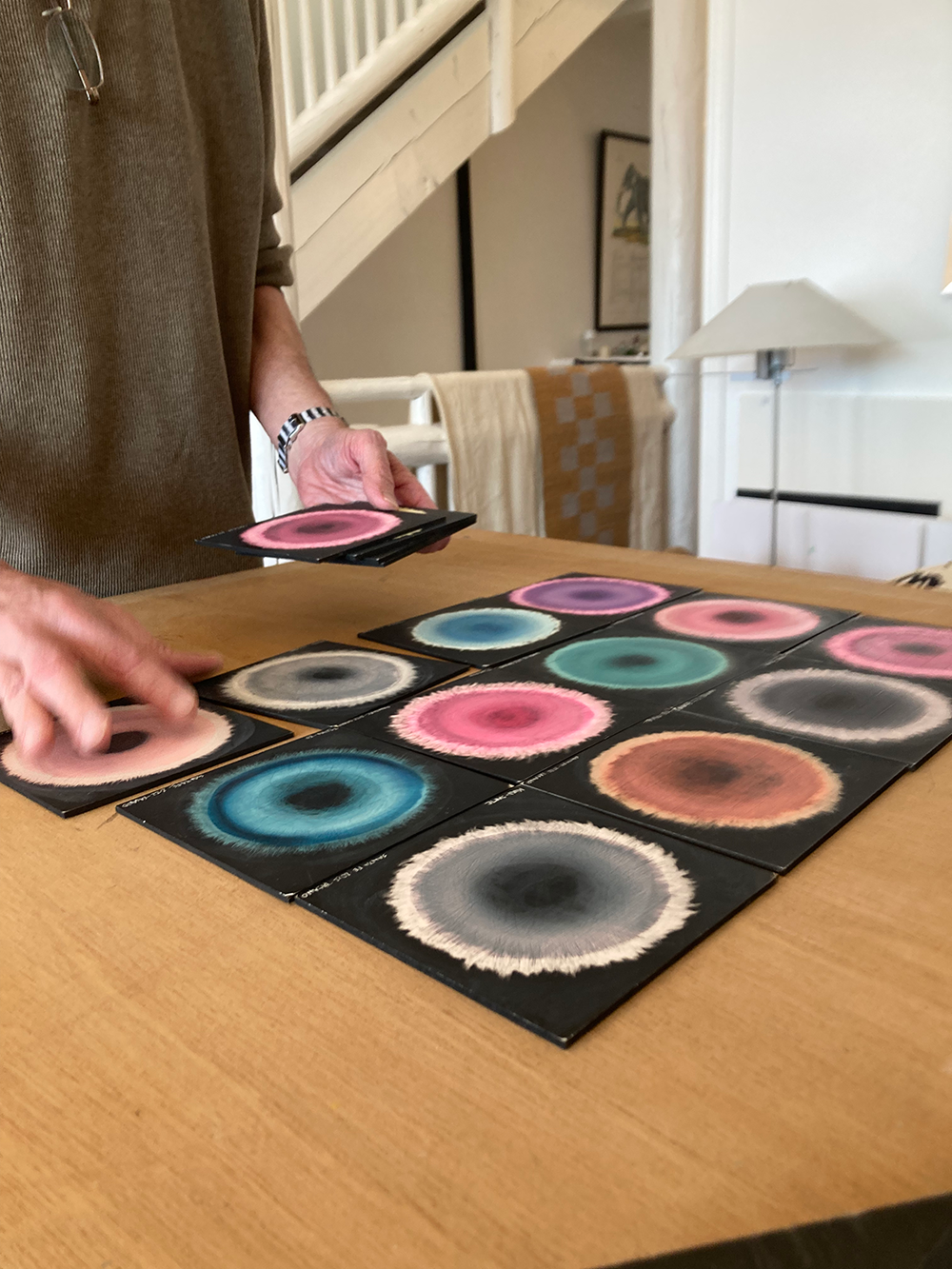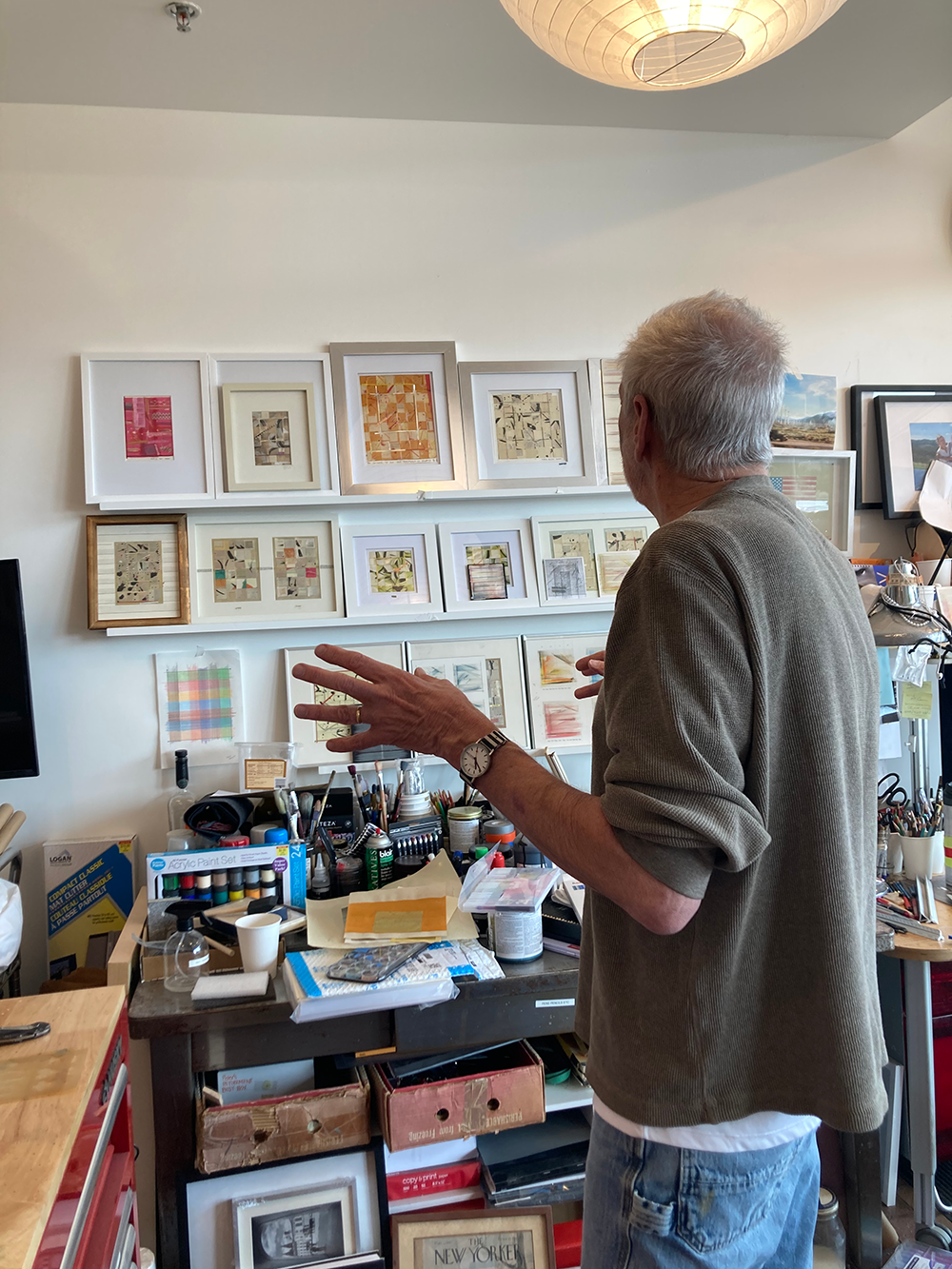The Artist
Meet the artist. Peter Joseph Fasano is an abstract minimalist based in Santa Fe, New Mexico. Born in Brookyln, NY and raised in Brookyln, Queens and Long Island. Prior to Fasano attending Parsons School of Design in 1969, Peter served in the U.S. Army from May 1967 – December 1968, spending fourteen months and two days (but who is counting) as a combat infantryman in Viet Nam. He feels incredibly lucky to have survived. That time period was life changing for Fasano. While at Parsons one of his instructors was David Easton, who also introduced Peter to Albert Hadley. Hadley who in turn introduced Peter to Halston. These three persons are seminal inspirations to this day. His career started in New York City in the 1970s, hand-painting fabric. He eventually founded the textile and design company Peter Fasano, LTD. Fasano shares, “Living in New York City provides a fuel rod of limitless energy.” Peter and his wife Elizabeth Hamilton moved to the Berkshires in 1990. The company expanded with a team of artisans, hand-painting and silk-screening fabric and wallpaper, eventually being represented in showrooms across the United States and abroad. After a successful career, Fasano sold the business Peter Fasano LTD in 2016, a textile and wallpaper company based in Massachusetts.
After selling the business, Peter and Elizabeth moved west to be closer to family. They settled in Santa Fe, New Mexico in 2017.
Fasano is back in the studio, returning to who he was 50+ years ago. The latest desire is to find a gallery to represent his work. He is currently creating new chapters of work, manifesting through his collections of JOSS PAPER, LINES, SCRATCHBOARD, COLLAGE and AQUABOARD.
The Approach
Fasano shares how his decades of living in NYC and on the east coast have led him to this point. He remarks on the current feeling of incredible happiness in his life that fuels his creative output. Of his many inspirations are, Agnes Martin, Jackson Pollock, Cy Twombly, Sol Lewitt, are just a few to mention. With regard to Martin’s work, Fasano shares, “I love the quiet discipline of what she does”. As Fasano returns to his own individual work and returning to the studio, this time just for himself. Fasano remarks how Martin comes up again as an influence, “I was told she kept drawing lines to keep herself from going crazy, and I was inspired by that knowledge to flip the switch and return to drawing. It was in 2019 and I remember feeling it was time to go back to my first love, a maker. The next morning I sat down at my table and got out my pencils, paper and ruler and I started drawing lines, which is something I did in the 1960s and 1970s. I felt an instant reconnection to who I was a long long time ago. ” This resurgence of creative output manifested in the initial chapter called JOSS PAPER.
In Fasano’s next distinct period LINES, he references Ludwig Mies van der Rohe as an architectural hero. His work resonates with Fasano, and can be evident through his use of geometry, line, perspective, and a deep sense of organization. “Less is more” was a Mies dictum that continues to influence Fasano’s life in almost every way. Just as architects label their designs and drawings, Fasano too labels various aspects of his works including the specific materials, counting lines and documenting the process. Another guiding principle is that of textiles and woven materials. While Fasano is not a weaver, his decades of work in the textile industry influence his current work. The book Undiscovered Minimalism: Gelims from Northern Iran with text from P.Tanavoli and Prof.H.Meyer in English shows woven likenesses that continue to inspire Fasano.




